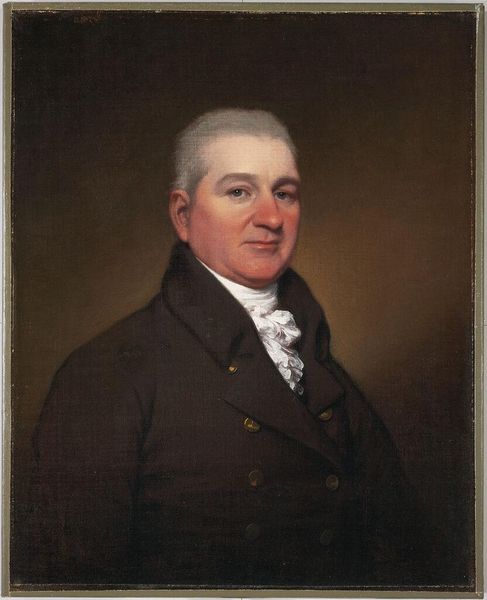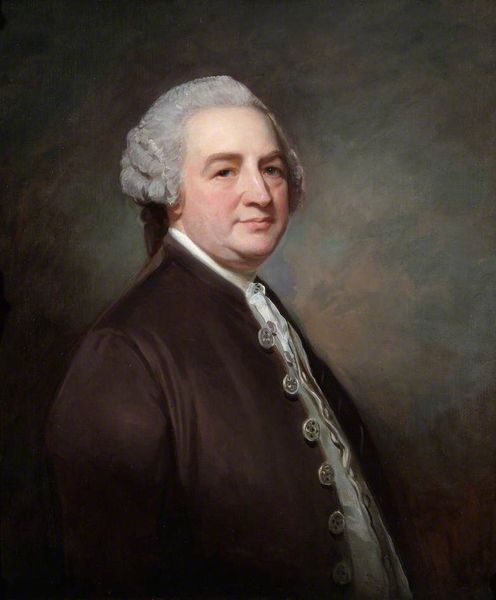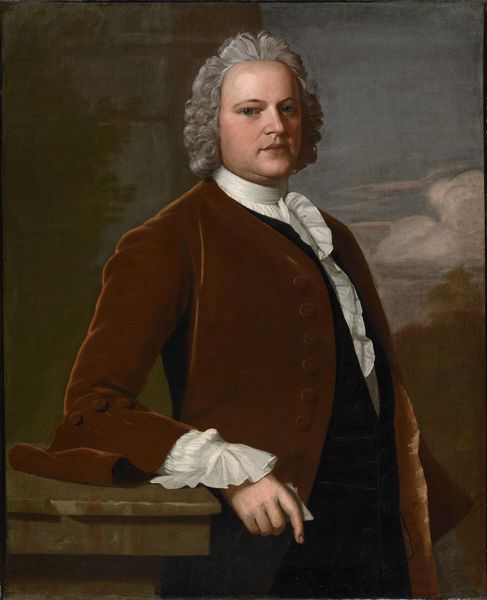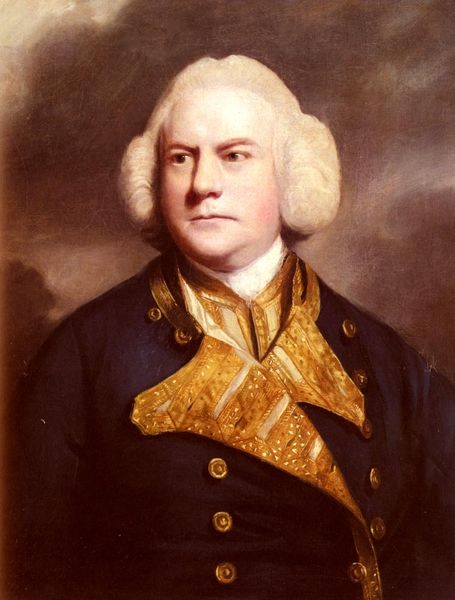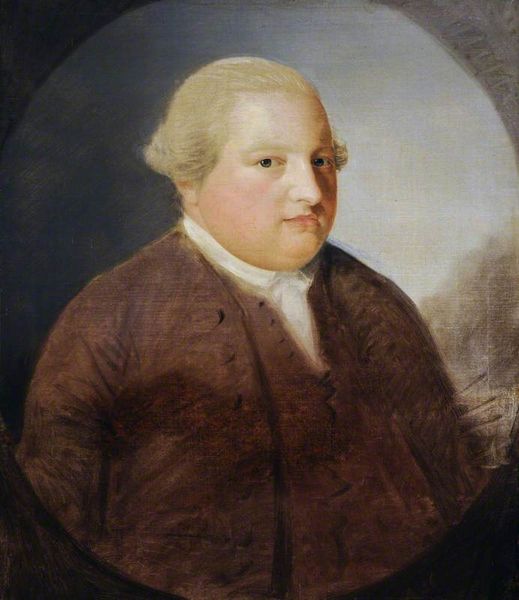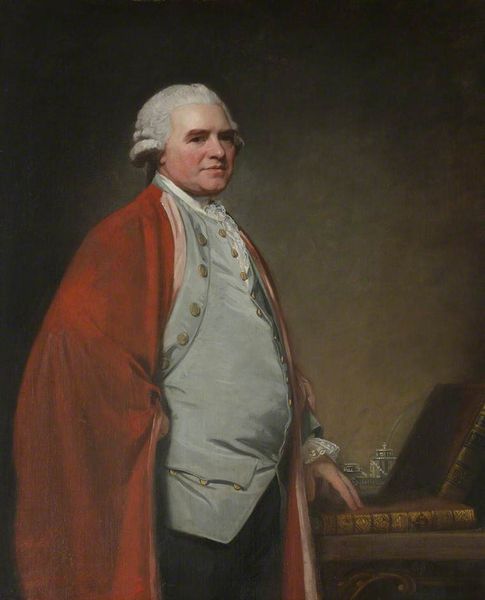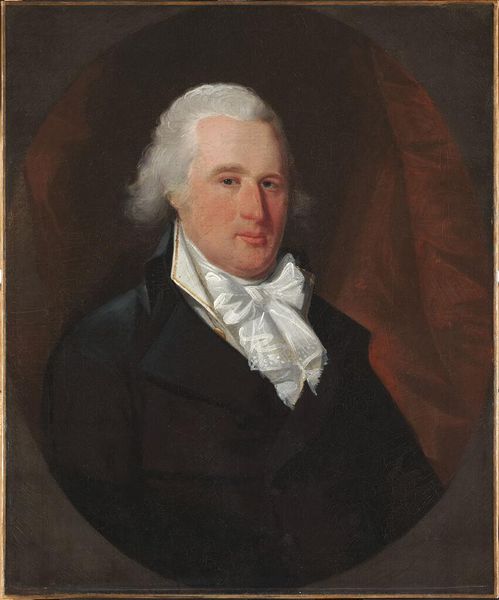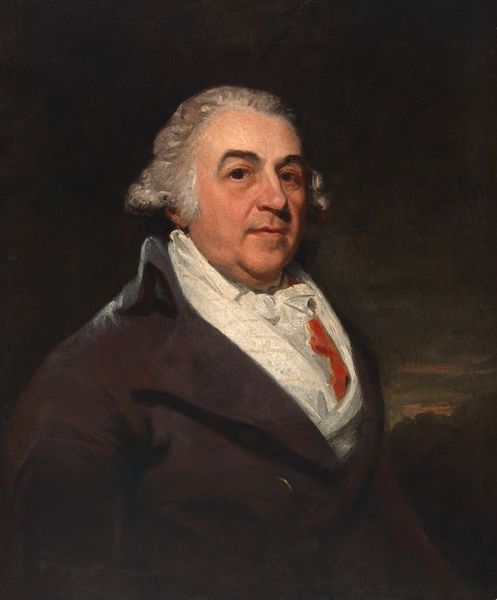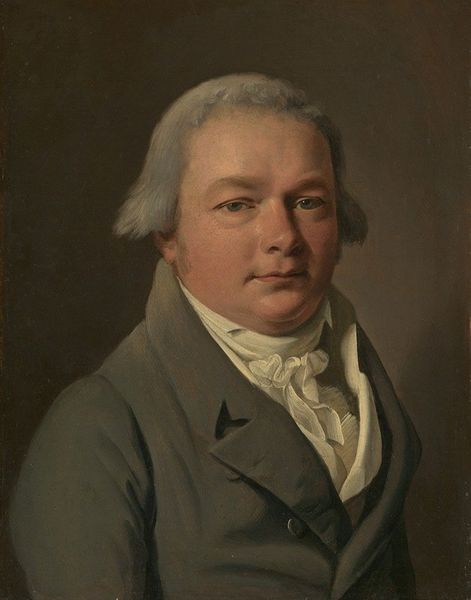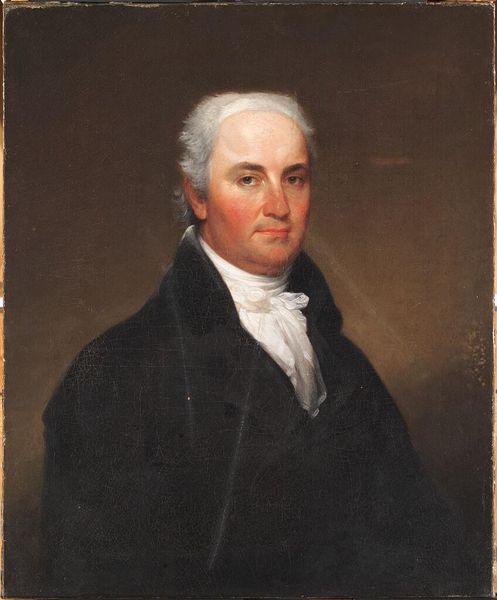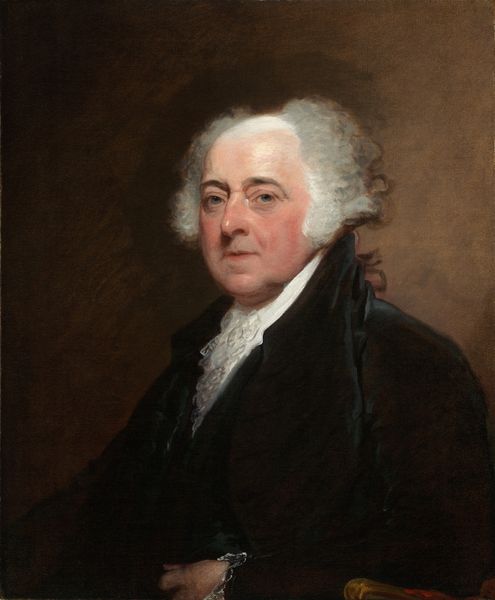
painting, oil-paint
#
portrait
#
neoclacissism
#
portrait
#
painting
#
oil-paint
#
figuration
#
academic-art
Copyright: Public domain
Curator: Immediately, I’m struck by the somber mood. The sitter seems caught between worlds, the deep brown background pushing him forward yet also enveloping him. Editor: Let's consider George Romney’s portrait of Peregrine Cust, MP, dating back to 1779. A fairly typical commission of its time, wouldn’t you agree? These portraits reinforced status, perpetuated power structures... Curator: And carefully cultivated those structures through material signifiers. The meticulously styled wig, for instance. It's not just about fashion, but an articulation of a professional identity, a societal role demanding a certain performance. The artist had to procure high quality materials too. Editor: Indeed. Romney benefitted from the rise of the mercantile class—Cust himself was a prominent figure within that sphere, remember. The portrait itself acts as a form of political advertisement. Cust served as a Member of Parliament. Curator: Notice the rendering of the silk waistcoat. See how Romney subtly captures the way the light reflects. Consider all that went into crafting it - the labour, the global trade in raw materials and dyes - it all contributes to our reading of Cust's character and societal position. He presents the image of one who had good taste and judgement to lead. Editor: His gaze is rather… impassive. Deliberately so, I imagine. What do you make of that lack of emotionality? Curator: Calculated neutrality. It speaks volumes about the ideals of the era – reason, control. Any hint of excessive emotion would be seen as a sign of weakness. Even his complexion is meticulously rendered. The tools for art had become much more accessible due to industry. But what kind of world did it bring about? Editor: It’s a fascinating snapshot of its time, viewed through the lens of one man’s representation. It certainly highlights the evolving relationship between artistry and socio-political landscapes. Curator: Ultimately, looking closer, we can trace through such images how identity and status were constructed. How material reality actively produced power. Editor: And that act of observing itself, reminds us that these depictions continue to influence our perceptions and societal norms, perhaps subconsciously, even today.
Comments
No comments
Be the first to comment and join the conversation on the ultimate creative platform.
